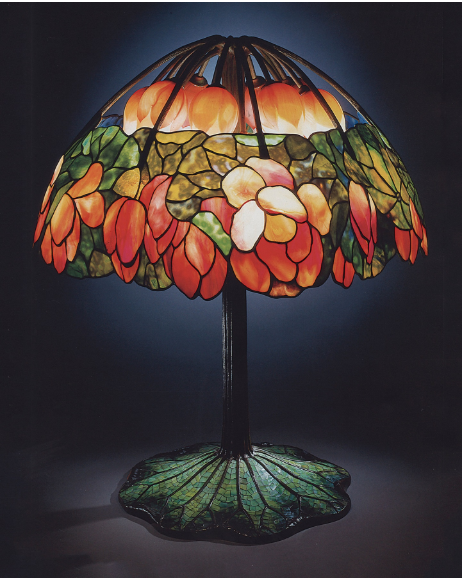Tiffany lamps boast a rich and captivating history, spanning over a century, renowned for their innovation, artistic brilliance, and unique fusion of craftsmanship and design. The story of Tiffany lamps begins with its visionary creator, Louis Comfort Tiffany.
1. The birth of Louis Comfort Tiffany (1848-1933)
Louis Comfort Tiffany was born in New York City in 1848, the son of Charles Lewis Tiffany, founder of the renowned jewelry company Tiffany & Co. From a young age, Louis showed a keen interest in art and design, laying the foundation for his future contributions to the decorative arts.
2. Establishment of Tiffany Studios (1902)
In 1902, Louis Comfort Tiffany founded Tiffany Studios, dedicated to the creation of decorative arts and furniture. The studio became a creative hub, bringing together highly skilled artisans, designers, and craftspeople.
3. Innovation in Glass Art
One of Tiffany Studios' most significant contributions was its pioneering achievements in the field of stained glass. Tiffany's innovative technique involved the skillful use and layering of different colored glass to create vibrant, intricate patterns. This technique, known as "Favrile glass," produced stunning colors and textures.
4. The birth of the first Tiffany lamp (circa 1895)
The first Tiffany lamp is said to have been created around 1895. Louis Comfort Tiffany, along with his chief designer Clara Driscoll and a team of skilled artisans, developed the unique leaded-glass lampshades that would later become synonymous with Tiffany lamps. These lampshades were often inspired by nature, featuring designs such as flowers, dragonflies, and peacock feathers.
5. Popularity and Commercial Success
Tiffany lamps gained widespread popularity and commercial success in the late 19th and early 20th centuries. They became highly sought-after decorative items, adorning not only the homes of the wealthy but also appearing in public spaces.
6. Decline and Revival (1920s to 1960s)
With changing tastes and economic challenges, Tiffany Studios faced financial difficulties and eventually closed in the mid-1920s. Tiffany lamps fell out of fashion, but their unique beauty endured.
7. Resurgence of Interest (Late 20th Century)
In the late 20th century, interest in Tiffany lamps surged again. Collectors and enthusiasts recognized their historical significance and artistic value, renewing appreciation for these iconic works.
8. Legacy and Collection
Today, Tiffany lamps are considered timeless artistic treasures. Original Tiffany lamps from the late 19th and early 20th centuries are highly sought after by collectors and fetch impressive prices at auctions. Furthermore, modern reproductions and inspired designs continue to captivate generations with their unique beauty and exquisite craftsmanship, a testament to the enduring legacy of Tiffany lamps.
Tiffany lamps stand as a lasting legacy of Louis Comfort Tiffany's artistic vision and the superb craftsmanship of the artisans who brought his designs to life.


